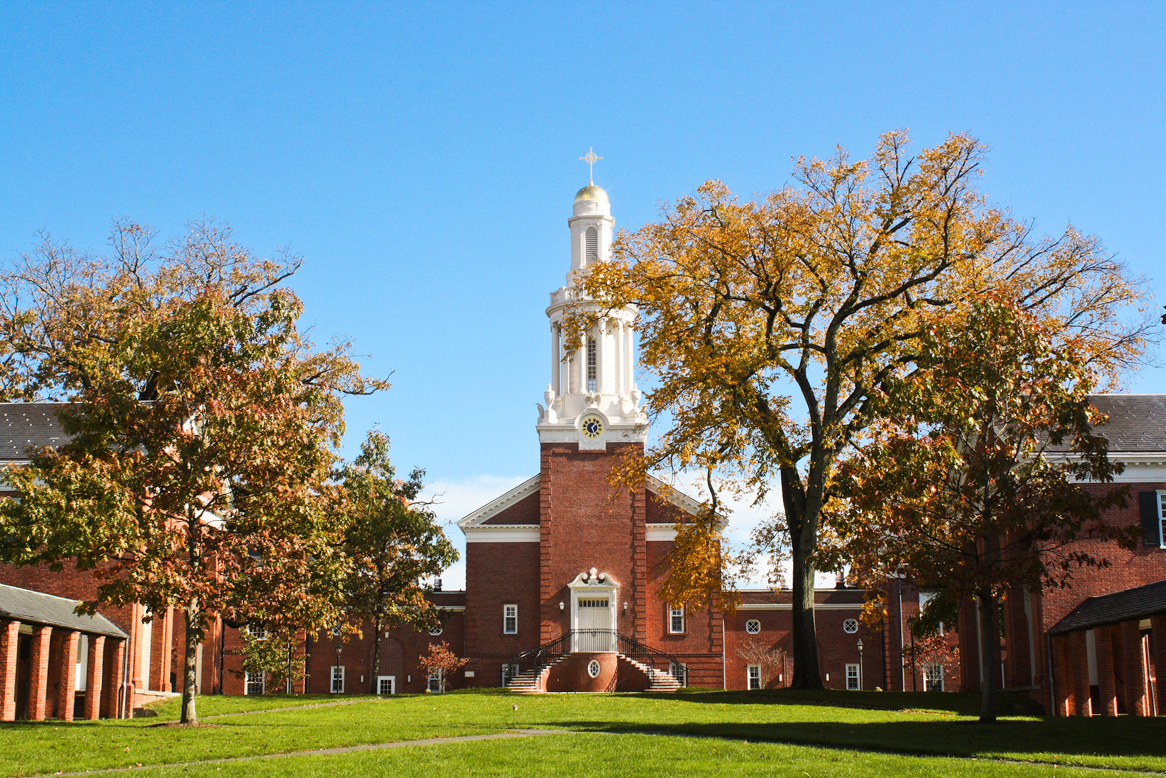
When John Gillespie Magee, class of 1906, arrived in Nanking in 1912 to serve as a missionary of the Episcopal Church, he did not imagine that he would later witness and record the Japanese atrocities in the then-capital city of China.
Last November, the Yale Divinity Library received a special gift: 13 reels of film footage taken by Magee during his stay in China during the 1920s and 1930s. Donated by Magee’s grandson, John G. Magee III, the film contains rare footage of the Nanking Massacre — six weeks of mass rape, looting and killings perpetrated by the Japanese during World War II. With his camera, Magee had recorded Nanking under Japanese occupation and later smuggled those films out of the country. Along with earlier donations of Magee’s letters, writings and other personal items, the film reels hold significant value for historical research, according to Yale history professors who study modern China.
“It is on behalf of the entire Magee family that I officially turn over these films to Yale University, where the Rev. John Gillespie Magee’s historic journey began,” the donor, Magee III, said at an informal donation ceremony on Nov. 17 at the Divinity School. He could not be reached for further comment.
Martha Smalley, a special-collections consultant at the Divinity Library, said Magee’s films are famous among researchers as important primary-source material. Because Magee was one of the very few people who had a recording device back in the 1920s and 1930s, his film footage is among the only documentation of the Japanese army’s war crimes in Nanking during the occupation period, Smalley added.
The film reels were digitalized at a sponsorship from the USC Shoah Foundation Institute for Visual History and Education, a nonprofit organization promoting audiovisual interviews with survivors and witnesses of the Holocaust and other genocides. The foundation is producing a documentary about the situation in Nanking and Shanghai during World War II. The reels were digitalized as part of the foundation’s documentary project.
Two film clips, from reel one and reel nine, are now available on the Divinity Library’s Nanking Massacre Project website. The latter is a three-minute clip showing Chinese civilians in refugee camps and victims on stretchers and in bandages.
History professor Peter Perdue, who is an expert in Chinese history, said that although scholars have long known about the Magee films, most clips were not digitalized. The availability of the content will be very helpful to many historians, he added.
During the Japanese occupation of Nanking, western missionaries stayed in a safety zone that was free from the Japanese military attack. They provided medical treatment, helped relocate the Chinese and had the access to notice what took place, Perdue said. Magee was one of the 15 foreigners who formed the International Committee for the Nanking Safety Zone.
“Some Japanese have tried to downplay [the Nanking Massacre] and indicate that the causalities were not as bad as that represented by the Chinese side,” Smalley said.
She added that the additional film footage will provide a vivid graphic depiction of what happened, serving a widespread interest in uncovering direct evidence of the atrocities.
Perdue agreed, saying that documents from western missionaries are the most reliable source, as compared to those from the Chinese or Japanese government. The Chinese government pulled out its army and officials before the Nanking Massacre and although the Japanese did collection documentation, some of it may have been destroyed and the authenticity of what remains is questionable, Perdue added.
There are many sources of evidence for the war crimes of Nanking Massacre, and one of the biggest collections, which was initially published in 2005 in China, amounts to over 30 volumes, including reports, legal documents, diaries and memoirs, according to history professor Denise Ho ’00 — who specializes in modern Chinese history. But film footage of the Nanking Massacre is extremely rare. Hence, this digitalization of the Magee films will enhance historians’ understanding of the event, Ho added.
Prior to receiving the Magee films, the Divinity Library has obtained the majority of the Magee Papers from Magee’s sons, David Magee ’49 and Hugh Magee ’56. Those documents ranged from personal correspondences to newspaper clippings collected by the Magee family.
Smalley said the Magee Papers have attracted significant attention since they were collected. For example, Iris Chang, author of the best-selling 1997 nonfiction “The Rape of Nanking,” was among the first to study the collections. Afterwards, dozens and dozens of researchers and documentary-crew members traveled to Yale from both China and Japan to look at the materials in the Divinity Library, Smalley added.
The Nanking Massacre began on Dec. 13, 1937. An estimated 300,000 Chinese soldiers and civilians were killed, and 20,000 women were raped during the massacre.







